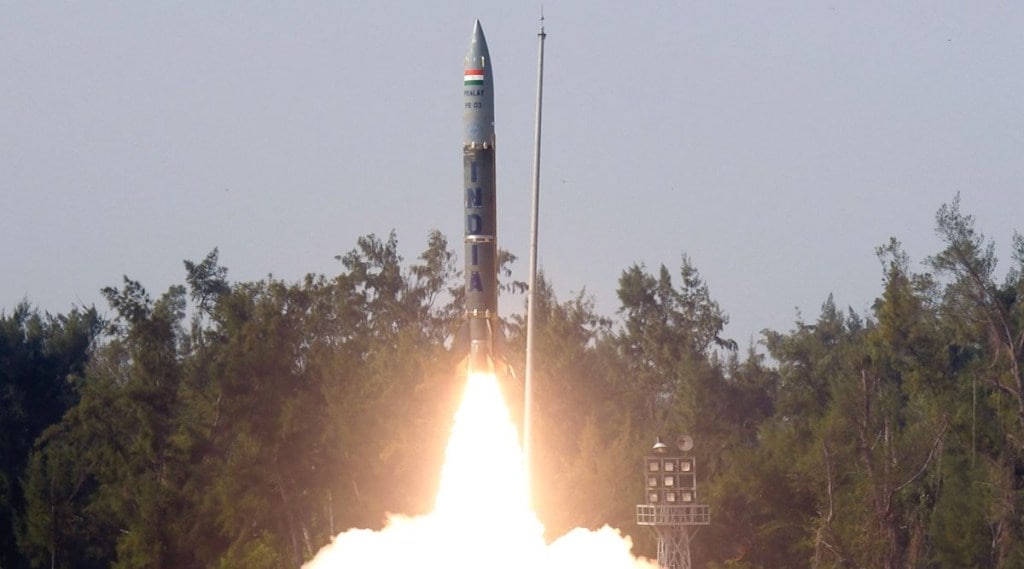On Thursday morning the indigenously developed conventional surface-to-surface short range ballistic missile (SRBM) “Pralay’’ was flight tested again by Defence Research and Development Organisation (DRDO). The test was conducted off the coast of Odisha in which according to the Ministry of Defence (MoD) statement it met all the mission objectives in both the configurations.
More about Day 2 Test
The test conducted today was for a different range and with heavier payload. It was carried out to prove the lethality and precision of the weapon.
The monitoring of the whole test was done by systems deployed along the eastern coast including Radar, Telemetry and Electro-Optic Tracking System, range sensors and instruments and down range ships which were positioned near the impact point.
Game changer for the Indian Army
This missile will give a big boost to the tactical battlefield strategy of the Indian Army. The quasi-ballistic missile can manoeuvre in flight, and has low trajectory. And it has a range of 150-500 kms
It has been developed based on the specifications given by the Indian Army which is the end user of this.
The missile system comes with the latest navigation system and integrated avionics and accuracy will be the high point of this.
As reported earlier, the missile once inducted in the Army will be the longest range SRBM in the inventory and will give a major boost to the operational plans.
Which missiles does the Indian Army have in its arsenal?
A sizable number of BrahMos missiles, a joint venture of India and Russia are already deployed in several strategic locations along the de-facto border with China in Ladakh and Arunachal Pradesh.
It also has NAG, Prithvi III as well as SMERCH and these are already part of the Indian Army.
Prahaar
This is also an indigenous short-range, solid propellant, road-mobile ballistic missile. And has a range of 150 km with a launch weight of 1,280 kg. This missile can be used by the Indian Army to strike at the enemy’s command and control centers, bunkers and armoured formations.
Nirbhay
This subsonic missile will help counter China along the Line of Actual Control and is capable of loitering and cruising at 0.7 Mach at a low altitude of 100 meters.
In 2020, the Indian Army had shoulder-fired missiles in several sensitive areas along the LAC. These missiles have a range of 2-5 km and can bring down low lying helicopters and aircraft.

